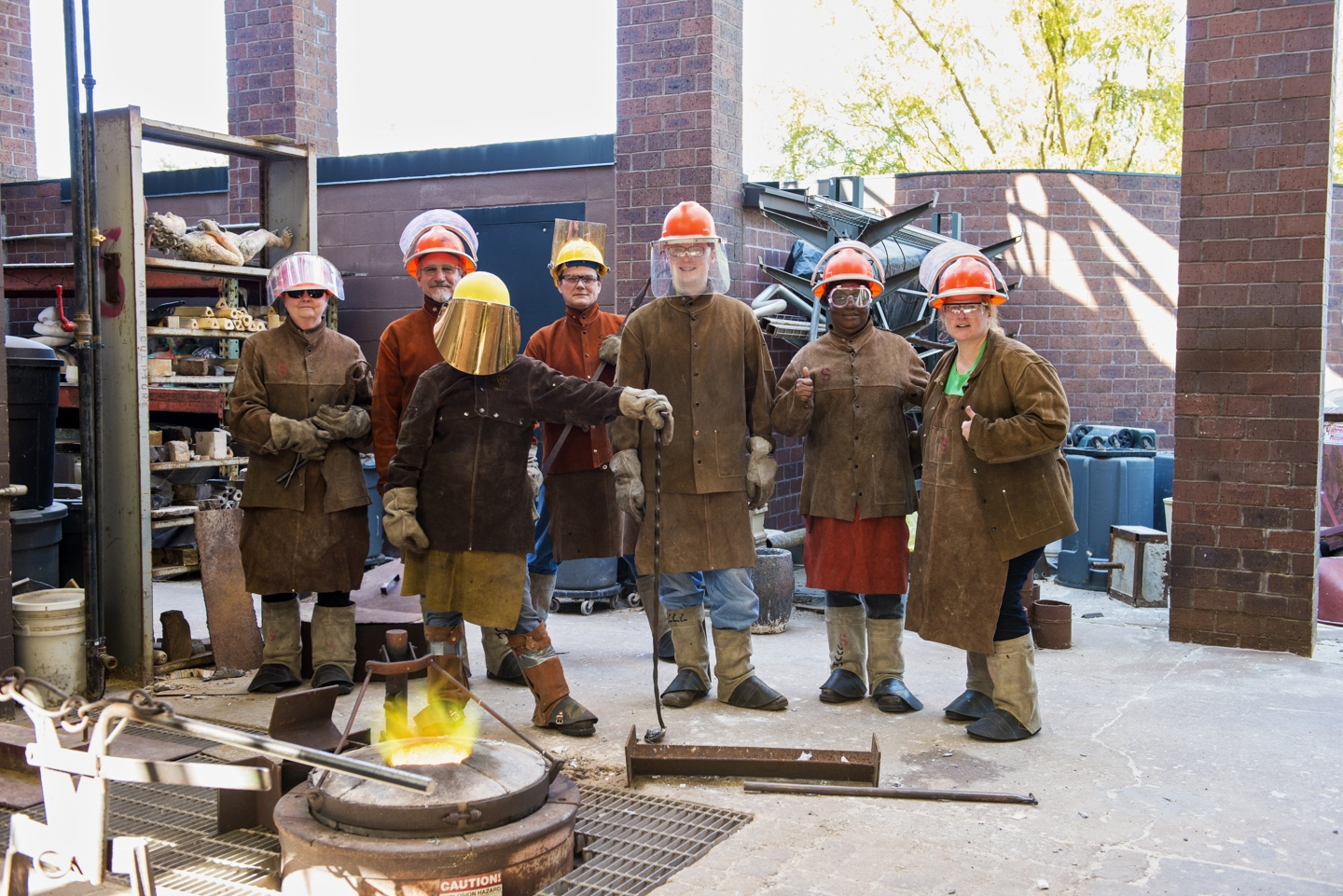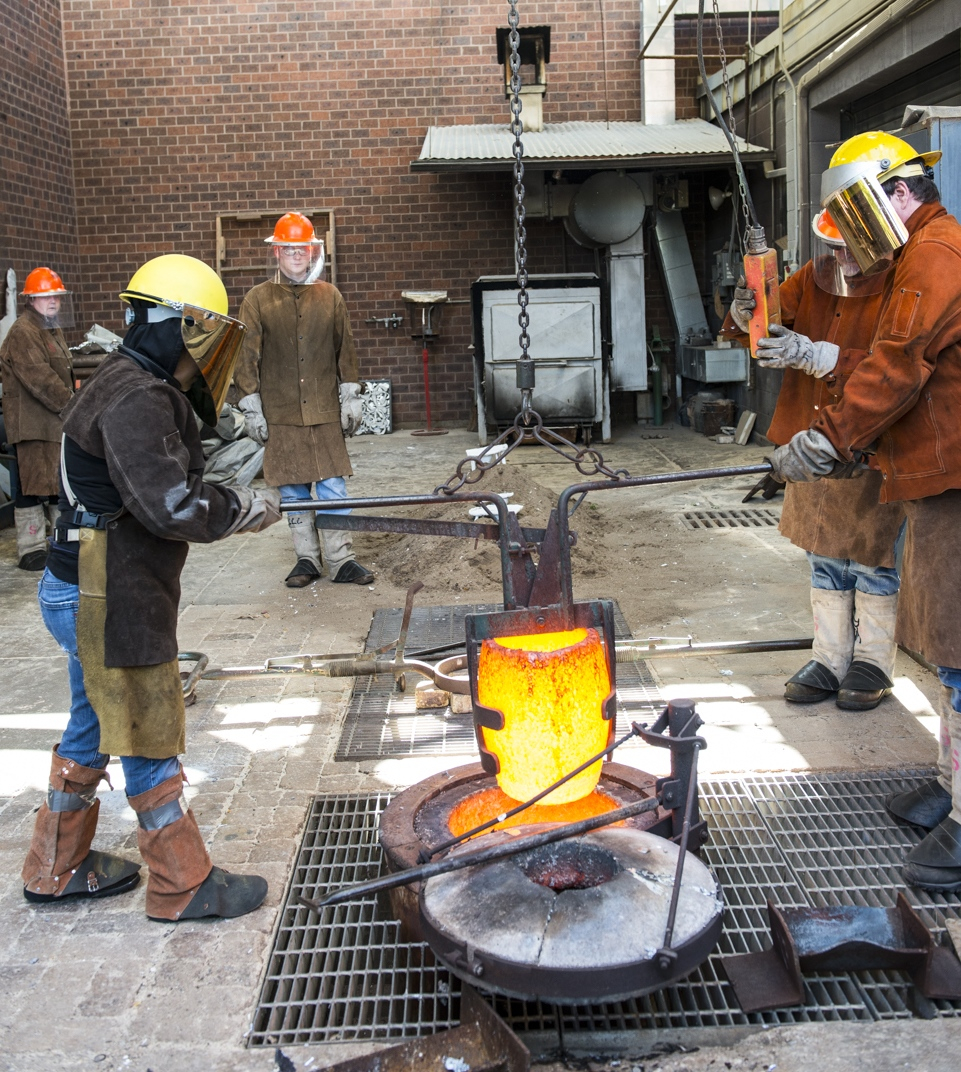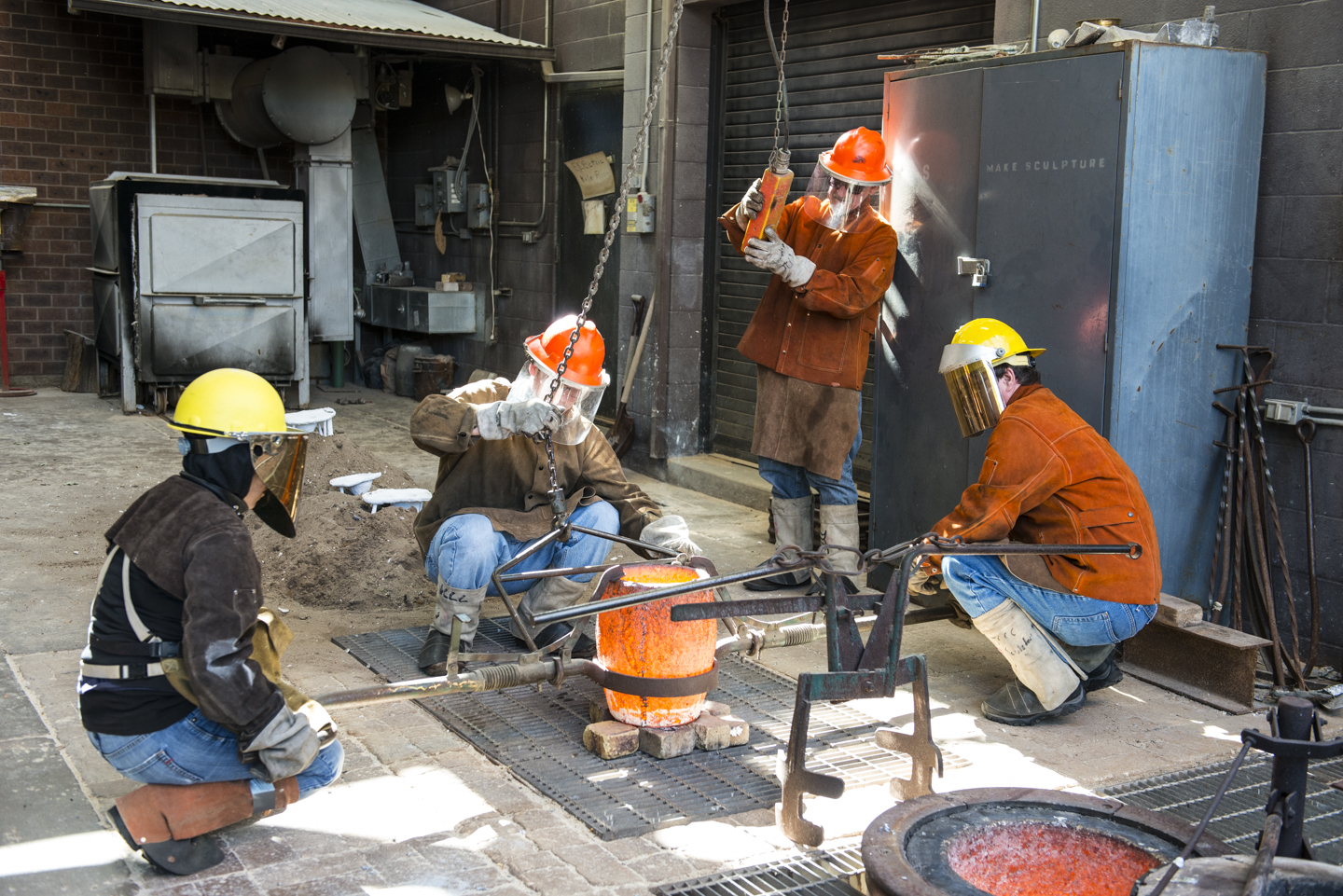Casting via the Ceramic Shell process
Photo credits: Barbara Sullivan
One of the truly exciting experiences for JCCC students in Sculpture is the casting process.
This intricate, multifold process starts with an idea, which then the student makes a “positive” of using microcrystalline wax. Once made, a wax “sprue” (channel for the metal) is attached. The entire solid piece of wax is then dipped multiple times into a silica slurry, which builds up a “ceramic shell” around the wax. After the shell has dried, it is fired and the wax is steamed/ melted out, leaving a void in which a metal is then poured, such as aluminum or bronze. The shell is then chipped away, leaving the “positive” metal piece, whereby the sprue is removed and the sculpture is cleaned.





